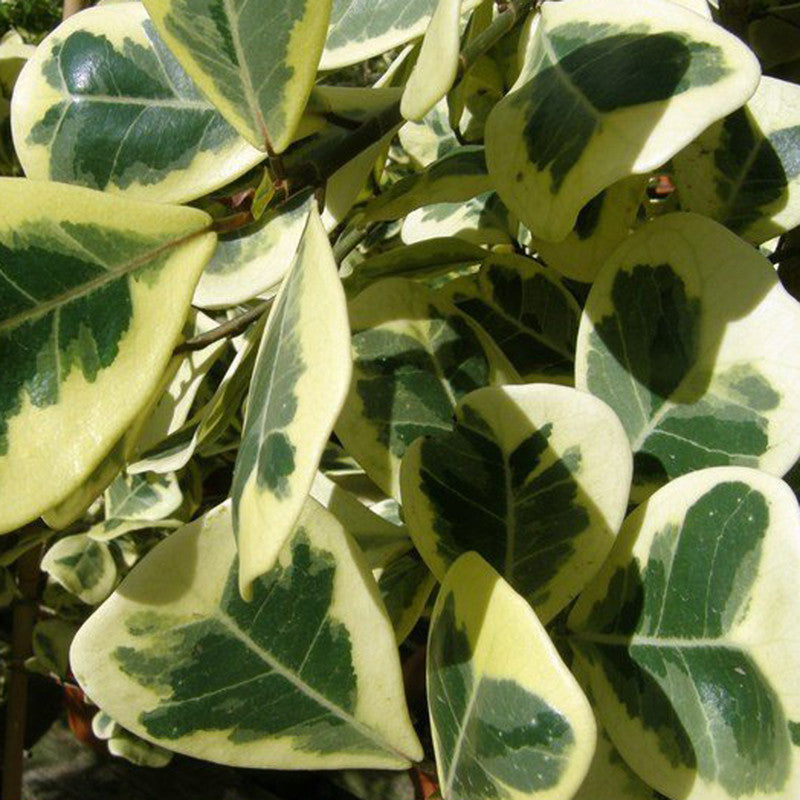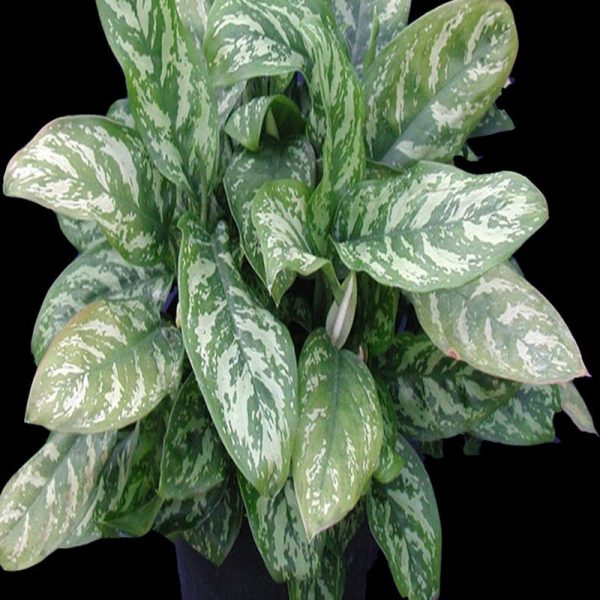Ficus triangularis variegata care—what you need to know!
Up today: ficus triangularis variegata care! But first, some real talk—I typically only write posts about plants that have been in my care for some time because I think that’s what differentiates me from some of the bigger websites that just churn out book reports on plants.
Howeeevverrrrrr…I am breaking that rule today. I only had my ficus triangularis variegata for a month or two. Why? Because after wanting one forever and finally ordering one on Etsy, I realized I just wasn’t vibing with it.
It is a bit more challenging than other ficus plants I’ve written about. (See my ficus lyrata or fiddle leaf fig care guide, my ficus altissima/yellow gem care guide, and my ficus elastica or rubber plant care guide.)
Also, sometimes I just don’t vibe with plants like I thought I would, and I never want to keep those for too long. Even if I give them the care they need, they won’t get the love they deserve. So I ultimately decided to rehome my triangularis variegata.
But! I do think this is becoming a more popular plant. It’s even being mass-produced by the big grower Costa Farms, so you’re sure to encounter one if you haven’t already. So I decided to finish off and share this post.
Where is the ficus triangularis variegata plant from?
The ficus triangularis variegata plant gets its name from its triangular leaves. They are a bit heart-shaped, too—kind of like mini fiddle leaf fig leaves. These thick leaves are yellow and have green variegation.
This is a tropical plant and generally requires less maintenance when compared to some other needy houseplants, which also helps with their popularity. Oh, and you might see this plant referred to as a “variegated dwarf triangular fig.”
The larger ficus genus has about 800 species of different plants, and the ficus genus is native to Asia’s warm, tropical areas. Many of the plants are known as fig trees because they grow fruits eaten by wildlife. Ficus triangularis variegata, however, is from South and West Africa.
How much light does a ficus triangularis variegata need?
Bright, indirect light works best for ficus plants, so try to put them in a well-lit room with normal light. Too much direct sun will burn the leaves, so if you want to keep it outdoors, make sure it is in a covered area.
This plant is not tolerant of lower light levels—if it isn’t getting enough light, it will lose variegation, become dull, and drop leaves. Your sunniest window is the best bet.
How much water does a triangularis need?
Ficus plants love water, so you can water your ficus triangularis variegata regularly. However, make sure that the soil dries out before you water the plant again. If you don’t let it dry out and the soil becomes waterlogged, the plant will die.
The best way to prevent this from happening is to inspect the soil before watering the plant. After you get to know your plant and your home’s conditions, you will probably settle into a nice watering schedule.
What is the best soil?
These plants grow in well-draining organic soils that dry quickly and do not store water for long. I recommend using any well-draining houseplant soil and adding in some additional coco coir or fine moss to help with moisture regulation.
Make sure you pot your ficus triangularis variegata in a pot with drainage holes. Since these plants like to be watered thoroughly and then dry out, you want to drench the plant each time you water it, letting all of the excess water flow out of the drainage holes.
Ficus triangularis variegata care: Temperature
The ficus triangularis variegata does well in all normal household temperatures. But try to keep the plant away from drafts or heat/AC registers since they can throw a bit of a fit with fluctuating temps.
These plants are not cold-hardy, so unless you live somewhere with great temps year round, it has to come inside for the winter. Also, don’t panic if your plant drops many or all of its leaves when you bring it inside or when the temperatures drop.
It is totally possible that it can drop its leaves from the change in environment, but that the root system will still be fine. The plant should regrow all of its leaves when the conditions improve and temps rise.
Humidity—don’t ignore this one!
Now for the downside of this pretty plant: it’s a bit of a needy one when it comes to humidity. A young, thriving plant needs more humidity than an adult. If it doesn’t have enough humidity, the leaves will brown and likely fall off.
This is a big reason why I wasn’t really vibing with this plant. I can do high humidity plants outdoors in the humid Maryland summers. But indoors? No way does my lifestyle lend itself to filling up and cleaning humidifiers every day. No way.
Fertilizer options
You can fertilize your plant with organic diluted compost or with a diluted houseplant fertilizer. Make sure to fertilize your plants only during the warm season. Water the plant completely when dormancy ends (at the end of winter) and fertilize it right after.
I personally use worm castings for all of my fertilizing needs these days. In the spring, I simply mix a handful or two in when I’m repotting my plants. If I’m not repotting, I just work it into the top layer of soil with a fork.
Ficus triangularis variegata growth rate
Ficus triangularis variegata plants are generally slow-growing plants. So if you are doing everything right, giving your plant the proper care and climate, and it is as yet not showing quick advancement as far as size goes, don’t worry.
Consistency and tolerance are key while developing this specific plant species in your home. Once they are established, these plants grow up to 4–6 feet.
Repotting and pruning a triangularis
Since triangularis is a slow grower, it doesn’t need to be repotted often. Maybe once every few years. If you see roots coming out the top or the drainage hole, it’s time! Make sure to use fresh soil when you do repot the plant.
Pruning is also helpful for ficus plants—they can grow kind of wacky, so pruning can help to keep a neat look. It also encourages branching for a full plant. Cut any parts of the plant that you believe are growing excessively. Use clean disinfected scissors or knives to do this.
How to propagate a ficus triangularis variegata plant
You can propagate most of the cuttings you prune off of your plant, too. Make sure you do this in the spring or summer. Here’s how to propagate a ficus triangularis variegata.
- Remove cuttings from the plant and ensure they are at least a few inches long—make sure each cutting has at least one pair of healthy leaves.
- Place cuttings in a well-draining potting mix and keep the cutting moist until it roots.
- After a few weeks, the cutting should begin to root. You can back off watering and start treating the plant like you would any other triangularis.
For more ficus propagation posts, check out my fiddle leaf fig propagation guide and my rubber plant propagation guide. These have more in-depth propagation instructions that apply to the triangularis as well!
Diseases & pest issues
Mealybugs and aphids are the most well-known pests your plant might encounter. If your plant is living in high moisture, low light, or unhygienic conditions, it is prone to attracting these pests. They typically appear under the leaves around where the leaf meets the stem.
The ideal approach to avoid pests is to rinse your plant’s leaves when you water it and let the soil dry out completely between watering sessions. Monitor for pests and treat with a store-bought houseplant insecticide spray if necessary.
Toxicity—is the triangularis toxic?
Ficus triangularis variegata plants contain sap that can cause irritation and inflammation in the mouth and the gastrointestinal tract when ingested. Keep this plant away from kids and pets for those reasons.







Reviews
There are no reviews yet.